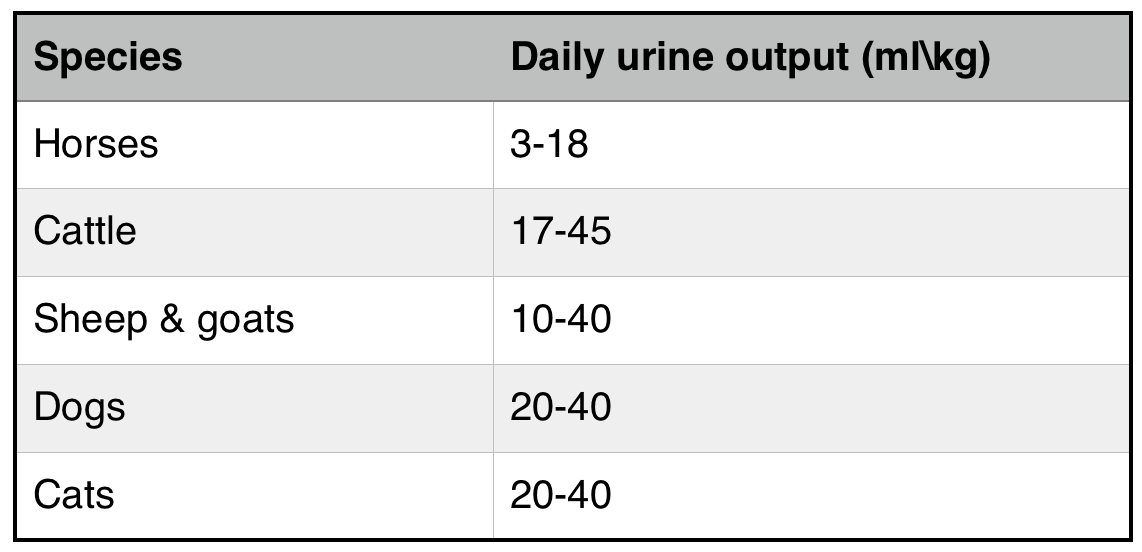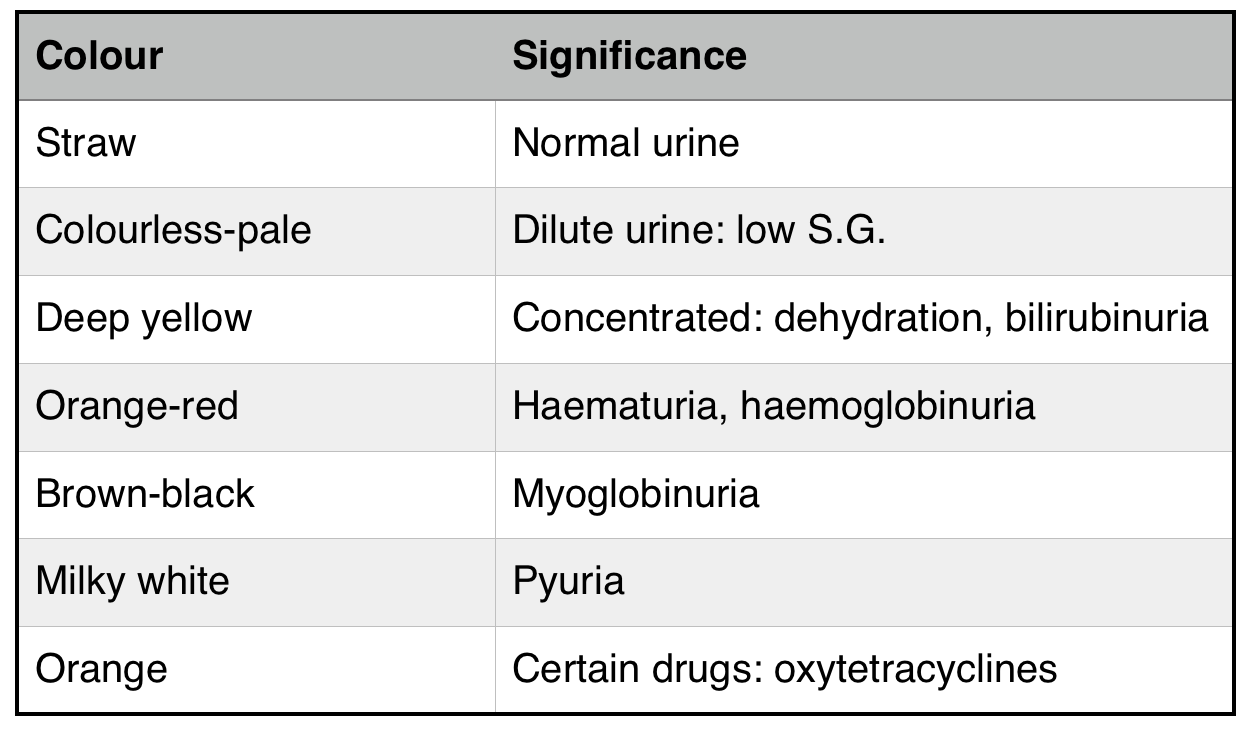Physical examination of urine
Overview
The average urine output of some common domestic species is shown in table 1. It is difficult to accurately estimate urine output. However observing the frequency and volume of urine passed can be combined with a clinical examination, history and inspection of the animal's accommodation and bedding to detect abnormalities.
Terminology:
Polyuria: increased urine production
Pollakiuria: increased frequency of urination
Oliguria: reduced urine production
Anuria: failure to pass urine
Volume
Ideally the volume of urine produced by an animal should be collected and measured over a 24 hour period. This is really only possible in animals with a urinary catheter and a closed collection system. Normal daily urine output can also be estimated as 1ml/kg/hr.
Table 1. Daily urine output (adapted from Sirois, 2015, p.160).
colour
Normal urine is typically straw-coloured (clear yellow). Variations should be recorded (see table 2).
Figure 2. Urine colours (adapted from Bellwood & Andrasik-Catton, 2014, p.62)
Turbidity
This refers to the cloudiness of the sample. In most species, freshly-passed urine is clear. Turbid urine may contain cells, crystals, microbes, casts or mucus. If urine is left to stand it may become cloudy due to bacterial multiplication.
Ensure the sample is well mixed before assessing turbidity, as particles that can cause turbidity to rise will settle out if the sample is left to stand. The sample should be at room temperature when assessing turbidity. Hold the container against some text on a white background and assess the sample as clear, slightly cloudy, cloudy or turbid/flocculent, depending on how easy it is to read the text.
Note: horses and rabbits normally have turbid urine. Their urine contains mucus and calcium carbonate crystals and so high turbidity is not an abnormal finding in these species.
odour
It is important to check for abnormal odours. Do this by wafting air over the open sample towards your nose (avoid inhaling urine droplets as this is a risk factor for the spread of leptospirosis).
The urine of intact adult male cats and goats often has a normal strong odour.
Some strains of cystitis-inducing bacteria will metabolise urea. This will result in urine with a strong pungent smell of ammonia (think stale sweat!).
A putrid odour is caused by protein degradation. This can be due to the presence of bacteria in the sample, or an old sample( especially if not stored in the fridge).
Ketones in the urine will result in a fruity smell, like apple drop sweets or nail varnish remover. This odour may also be noted on the breath of ketotic animals.
References
Bellwood, B. and Andrasik-Catton, M. (2014). Veterinary Technician's Handbook of Laboratory Procedures. Wiley-Blackwell: Oxford.
Sirois, M. (2015). Laboratory Procedures for Veterinary Technicians, 6th ed. Elsevier: St. Louis.



